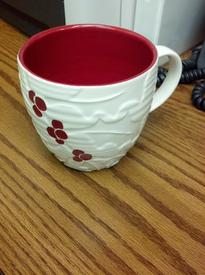Fitbit and Body Fat %

BarbieAS
Posts: 1,414 Member
Does anyone know if you enter a body fat percentage into the Fitbit site, does it take that into consideration when calculating your TDEE (since that will make it slightly more accurate)? I couldn't find the answer on their site. Thanks!
0
Replies
-
Body fat % is used to calculate your bmr if using the Katch-McArdle formula: http://www.calculatorpro.com/calculator/katch-mcardle-bmr-calculator/
Fitbit uses the Mifflin-St.Jeor formula the same as MFP does. So I don't think Fitbit would take body % into account. I could be wrong, and I have used their website's help forum to ask a question and got some really fast replies that were accurate so you might try asking there: https://community.fitbit.com/t5/Help-Forums/ct-p/product
I would prefer it used the Katch-McArdle, but I guess if a lot of people don't know their body fat % they decided it would be better to go with the Mifflin-St.Jeor one for accuracy.0 -
I did submit a suggestion that they include the ability to add BF % to aid in getting an accurate TDEE. I was thanked for the suggestion, for all that it is worth... LOL0
-
Thanks to you both! :flowerforyou: That makes a lot of sense. I didn't think to look into which BMR calc they were using, that would have given me my answer
 .
.
And yeah, wouldn't that be nice? Maybe they could use Mifflin-St.Jeor if you haven't entered a BF% and Katch-McArdle if you do, or something like that. I don't know. I just wanted to make sure that my laziness on recalculating and re-entering my BF% on the site wasn't giving me a less accurate TDEE (which it seems like it's not, so rock on!). Thanks again!0 -
The answer is no. Before I entered my body fat, Fitbit said I should be eating 2,164 calories. After I entered my body fat, Fitbit still said I should be eating 2,164 calories. I asked Fitbit's customer support the same question as you. The rep said that it it would recalculate to a more accurate suggested calories. It never did. The rep also said that Fitbit uses the Harris-Benedict formula. I knew right then that the Fitbit calorie suggestion would not change since that formula doesn't even include body fat lol. I don't think the reps necessarily understand the difference between the formulas, so I don't fault them.
I think a main takeaway is that each person will have to tweak the calories, based on the results gotten. Fitbit just gets you in the ballpark. I would still recommend the Fitbit to non fitness professionals. To be honest, there's no other tracker that calculates via Katch-McArdle anyway. Even if it did, you would still have to do a small tweak here and there. That's just how it goes. My Fitbit was a gift. I prefer to use the Katch-McArdle formula. I use my own calorie expenditure calculations, and plug them into Fitbit for reference only. Most fitness professionals, including myself, believe it's the most accurate since body fat is included in the formula.
Another main takeaway is that Fitbit shows people how much work it actually takes to lose a pound. Many folks don't realize how long it takes to burn 3,500 extra calories (key point "extra calories"). Fitbit helps to show them that a 10 minute workout doesn't cut it lol. Alternately, it really helps under eaters to see that they need to actually eat more...women especially. If they can see that their body is burning calories throughout the day by doing basic everyday activities & getting up to 1,200 calories or more, then they are more likely to eat at least these recommended calories for basic body function. I've seen many of my clients change their eating habits from that alone! No more 500 calorie diets lol.Does anyone know if you enter a body fat percentage into the Fitbit site, does it take that into consideration when calculating your TDEE (since that will make it slightly more accurate)? I couldn't find the answer on their site. Thanks!0 -
Indeed, sadly no. It's because people could really screw themselves over using some very badly estimated BF%.
But if you have a decent estimate, you merely need to adjust the height on Fitbit to make the BMR they use reflect your more accurate one.
The spreadsheet on my profile page can help do that.
On Simple Setup tab after looking over sample data in yellow cells - delete it all.
- Input your own for what you have - stop at the Activity Calculator.
- If you have a measured RMR figure, use it too.
Go to the Fitbit tab, there is your BMR and RMR from formula's using BF%.
And there is the height you need to change to on Fitbit's site to get their BMR to equal an average of BMR and RMR.
Sadly it's just inches, you'll need to convert to ft and inches.
Also, you can't use the default stride length either, unless the height change is minor - but better to get a best stride length figure anyway for accuracy.
Oh, why average between BMR and RMR?
Because Fitbit (and the others so far) use the BMR level calorie burn for ALL non-moving time, and that's not correct.
That should just be used for the 6-8 hrs of sleep time.
Awake time not moving should be RMR.
Any moving time is based on steps or HR formula for those devices.
So avg of BMR and RMR is just attempt to get a tad more accurate.
Normally been about within 5% for me, based on actual results and eating level.
Oh, you can track progress too on the Progress tab with measurements.0
This discussion has been closed.



